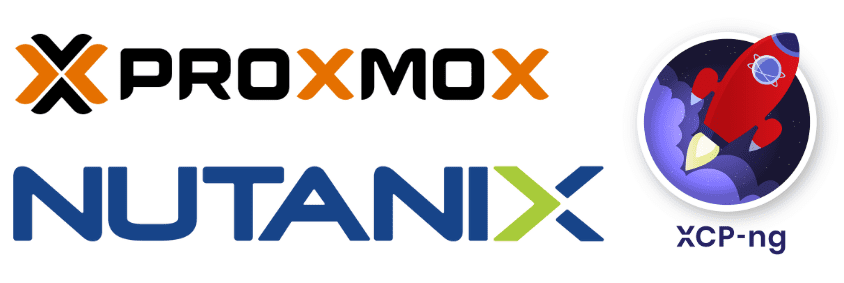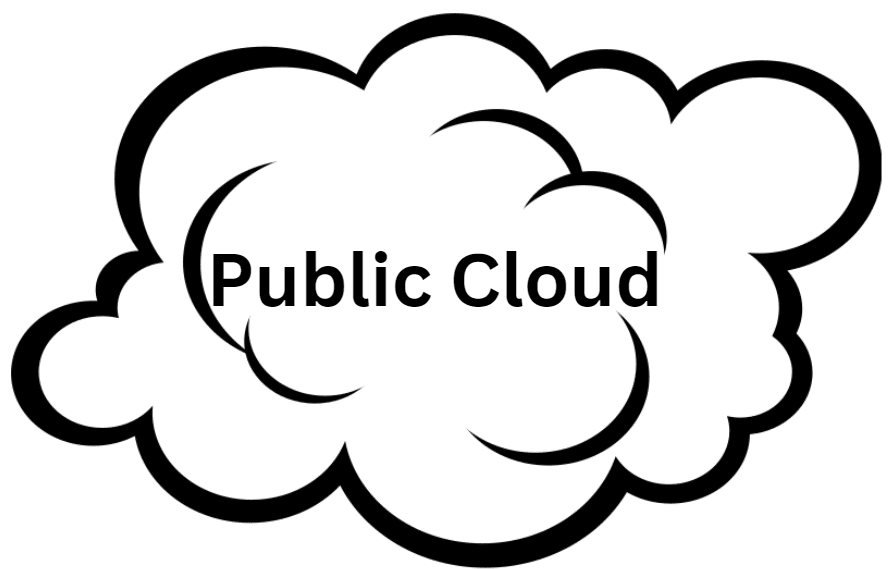Top Home Lab Trends in 2024

Highlights
- I would say the top trend that I am hearing about right now is those running VMware as their main hypervisor in the home lab for running virtual machines are looking to replace VMware with a free and open-source solution.
- Here is a real-world example that I went through in my home lab, moving my Unifi network controller from a VM to a Docker container.
- New hypervisors allow for custom configurations and meet all of the basic virtualization features that most are interested in for running workloads in production and home lab.
Wow, things have really changed in the past year from what we knew and were used to, compared to where things are now in early 2024. In this digital age, there are so many options for enterprise organizations, which trickles down to the home lab environment. There are a few trends that I am noting professionally and personally due to recent news and changes (tidal waves) across the industry. Let’s look at the top home lab trends in 2024 that you should be taking note of and the benefits they bring.
Table of contents
- 1. Replace VMware or Learn a New Hypervisor in the Homelab
- 2. Collapse More VMs into Containers
- 3. Host Local Generative AI Models and Use AI in the Lab
- 4. Integrate with the Public Cloud Computing
- 5. Start Learning DevOps and DevOps Practices
- 6. Replace “Big Iron” Servers with Mini PCs
- Wrapping up the top trends in home lab this year
1. Replace VMware or Learn a New Hypervisor in the Homelab
In case you haven’t heard (highly unlikely), the VMware buyout by Broadcom was finalized and boy has it meant changes. From ending the partner program, killing off Free ESXi, consolidating the entire VMware catalog down to 2 SKUs, and raising prices 5-10x, Broadcom has made sweeping (not necessarily good IMHO) changes.
Organizations want the best features that hypervisors can offer, along with optimal performance and reduced operational costs. With the drastic price increases and changes on the VMware side, there is much fear, uncertainty, and doubt about the future with VMware.
I would say the top trend that I am hearing about right now is those running VMware as their main hypervisor in the home lab for running virtual machines are looking to replace VMware with a free and open-source solution.
Arguably the top choice for home lab platform many are choosing right now is Proxmox. Proxmox has gained tremendous popularity over the past few years in the home lab due to its easy configuration, feature set and tools, community support, hardware requirements, and it continues to gain momentum. However, there are many other options out there for home lab, including XCP-ng and Nutanix Community Edition. Take a look at my blog post here, covering the best KVM hypervisors in 2024:
Other relevant posts:
- VMware by Broadcom Lesson: Don’t base your career on a product
- Best Free Hypervisors Now That VMware ESXi Free Edition is Dead
- Migrate from VMware to XCP-ng: A vSphere Admin’s perspective
Why This Trend?
- Cost: VMware with the Broadcom price hikes has become the most expensive solution out there
- Great open source options: New hypervisors allow for custom configurations and meet all of the basic virtualization features that most are interested in for running workloads in production and home lab
Ideas to Implement:
- Use nested virtualization: Using nested virtualization in VMware, you can first play around with and learn Proxmox, XCP-ng, Nutanix, and many others out there
- Experiment with Containers: Using containers is a great tool for lightweight virtualization. It offers an efficient way to manage services and applications on your home server.
- Leverage Windows Server or client Hyper-V: For those running a Windows-based environment, if you have the “Pro” license for client, you can use Hyper-V for a virtualization lab.
2. Collapse More VMs into Containers
The shift from traditional VMs to containerization is a significant trend, driven by the need for more efficient use of resources and simplified management of services. Containers, orchestrated by solutions like Kubernetes, provide a powerful tool for achieving energy efficiency and operational cost reductions in home labs. This approach not only streamlines deployment but also aligns with the move towards automation and the growing integration of IoT devices in home networks.
Here is a real-world example that I went through in my home lab, moving my Unifi network controller from a VM to a Docker container:
Why This Trend?
- Enhanced Efficiency: Containers require less overhead than VMs, translating to lower energy consumption and improved power efficiency. The shift to mini PCs in the home lab (which we will talk about below) is also helping to drive this trend. You can fit a lot of containers on a single host. I once was able to at least create and spin up 13000 containers on a single server!
- Flexibility and Scalability: Easily scalable, containers can now do so many things that you may not think possible. You can host full virtual machine desktops inside containers, use containers for VPN remote access solutions, host containerized databases for data sources, home automation, and much more.
Ideas to Implement:
- Migrate Media Servers: For applications like Plex server, consider running them in containers to improve efficiency and ease of updates.
- Automate with Scripts: Utilize scripts to manage container lifecycles, making it simpler to deploy, update, and monitor your services.
3. Host Local Generative AI Models and Use AI in the Lab
The world will never be the same since the onset of generative AI on the scene in 2023. This has been a revolutionary development in the world of technology that I don’t think we are yet to grasp the significance of.
Artificial intelligence is reshaping what’s possible in home labs, from automating mundane tasks to analyzing large volumes of data from various sources. AI is set to transform smart devices, virtual reality, augmented reality, machine learning, robotics, Internet of things, data analytics, cybersecurity, and much more. It is allowing those without any programming skills or experience to essentially become programmers.
For those of us DevOps engineers, you can have AI write Terraform code, Ansible scripts, pipelines, Kubernetes YAML files, and the list goes on. The great thing is it is an extremely powerful learning tool. If you get stuck on logic or syntax on how to do something, it can help get you over the hump. You get to choose how much you want it to help, which is great.
Hosting AI models locally allows users to fully harness the capabilities of their own hardware. It also keeps your prompts and data local to your home lab instead of sharing this with others like OpenAI, Google, etc.
While not exactly housing the LLM in your lab, I did write a post covering how to host the frontend to OpenAI ChatGPT using Chatpad AI in a docker container here:
Why This Trend?
- AI is everywhere: AI is literally everywhere and growing demand for it shows no signs of slowing. If you aren’t using AI in some form or fashion, you are missing out on an opportunity to have some pretty cool technology working with you and helping to create cool solutions with home servers.
- Use powerful hardware: Most of us have hardware that is sitting idle or fancy graphics cards that we can use for resource allocation for AI capabilities.
Ideas to Implement:
- Run an LLM on an old pc: Running your own LLM can be a fun experiment and is a great way to learn the ins and outs of AI
- Integrate AI with IoT: Use AI to process data from IoT devices, including Raspberry Pi devices you may be using, enhancing the automation and efficiency of your home network.
4. Integrate with the Public Cloud Computing
Public cloud is everywhere and most organizations are using it in some form or fashion. Many might think there is no way to really integrate and use public cloud along with a home lab and the two are polar opposites.
However, that isn’t necessarily true. And, I think there are some really cool projects you can spin up in the home lab that make use of public cloud resources. I recently wrote about spinning up an AWS ECS Anywhere cluster to house your cloud control plane in AWS while your actual workloads exist on-premises or in your home lab:
Why This Trend?
- Scalability and Flexibility: The cloud provides resources on demand and with the VMware “tax” as of late, I think more organizations will be leaning this direction.
- Access to Advanced Services: Cloud platforms offer services that can significantly enhance the capabilities of a home lab, from AI to other services like cloud control planes as we mentioned above.
Ideas to Implement:
- Hybrid Cloud Storage: Use cloud storage as an extension of your local storage solutions like TrueNAS ZFS pools, such as for your backup solution. Create a “cold tier” in AWS S3, or another public cloud service.
- Leverage Cloud-Based AI: Use a hybrid control plane like AWS ECS Anywhere or Azure Arc to control, monitor, and configure on-premises lab servers.
5. Start Learning DevOps and DevOps Practices
DevOps practices emphasize automation, continuous integration, and continuous deployment. DevOps practices allow managing servers, services, and applications, from code, including updates to security patches.
Learning DevOps practices in a home lab provides a sandbox for playing around, learning, and experimentation. If you are looking for a DevOps engineer role, it can help you gain real-world, hands on experience.
Check out my post here on a basic CI/CD pipeline example:
Why This Trend?
- It is the way of the cloud: DevOps skills and practices are what drive the cloud and allow developers to develop in a modern way, including using a CI/CD pipeline.
- Skill Development: DevOps skills include blending coding, system administration, and operational expertise.
Ideas to Implement:
- Learn Git: Git is an essential skill to learn as it establishes the versioning and branching methodologies at the heart of modern development.
- Continuous Integration/Deployment: Set up CI/CD pipelines for your projects, using a self-hosted instance of GitLab or something similar. Instead of creating a legacy scheduled task, instead create a CI/CD pipeline that runs your PowerShell code at specified intervals or other time consuming tasks.
6. Replace “Big Iron” Servers with Mini PCs
There is definitely a trend to replace “big iron” enterprise servers with power hungry Xeon processors we may be using to host home lab services with mini PCs. Mini PCs are becoming so much more powerful and include some incredible innovation and advancements. Take the Minisforum MS-01 for example.
It is a great example of an extremely powerful and versatile mini computer on the market you can use as a robust server solution with impressive specs, including a multi-core CPU and potential to house 96 GB of DDR5 RAM, a host of networking options for connectivity, efficient cooling and heat dissipation, Intel vPro for remote monitoring, and many storage options for SSD and NVMe for enthusiasts (really everything a home lab needs in many areas for the money).
With rising power costs around the globe, energy efficiency is becoming more important than ever and is a requirement for many. Mini PCs sip power compared to rack mounted enterprise data center servers that often draw more power than one wants to pay for in a month/year’s time on a power bill.
Read my review of the Minisforum MS-01 here:
Check out the VHT forums for more information as well:
- Minisforum MS-01 with i9-13900H 3 NVMe two 10 gig SFPs two 2.5 GbE ports PCIe-4 and DDR5 – Mini PCs
- Does the Minisforum MS-01 support bifurcation with the PCI-e slot? – Mini PCs
Why This Trend?
- Energy and Space Efficiency: Mini PCs consume less power and take up less space which is becoming an important consideration and expectations for home
- Cost-Effectiveness: With lower initial costs (compared to new data center servers) and much lower operational costs. Even though you can get cheap 2nd hand enterprise server gear from Ebay, mini PCs are an extremely affordable option for a home lab budget due to the power efficiency of the setup.
- Expanding hardware options: As mentioned with the Minisforum MS-01, mini PCs are expanding in capabilities, components, and functionality to run various operating system configurations and hypervisors compared to just a few years back.
Ideas to Implement:
- Network Attached Storage (NAS) Solutions: Deploy NAS solutions on mini PCs for data storage and access within your internal network.
- Snag a cheap mini PC to install Proxmox or XCP-ng: There are constantly mini PC deals on the net where you can snag a mini PC for sizeable discounts. I know Amazon often provides coupons you can clip on checkout for many of the mini PCs listed.
- Home Media and Streaming: Set up a Plex server on a mini PC to use as a media streaming solution.
Wrapping up the top trends in home lab this year
These trends in home lab environments for 2024 are rooted in exciting technologies and surprising developments as we have seen with VMware by Broadcom. Many will be embracing new virtualization technologies this year, including learning totally different hypervisor technologies. Using containerization, integrating AI and cloud services into your home lab allows learning great new technologies that are used in the enterprise and will provide some really great capabilities moving forward. These trends provide really great potential for personal growth, skill development, learning, community collaboration and just having fun in a home lab geeking out.










